Abstract
Patient histories were obtained from 99 patients in three different ways: by a computerised patient interview (patient record), by the usual written interview (medical record), and by the transcribed record, which was a computerised version of the medical record. Patient complaints, diagnostic hypotheses, observer and record variations, and patients' and doctors' opinions were analysed for each record, and records were compared with the final diagnosis. About 40% of the data in the patient record were not present in the medical record. Two thirds of the patients said that they could express all or most of their complaints in the patient record. The doctors found that the medical record expressed the main complaints better (52%) than the patient record (15%) but that diagnostic hypotheses were more certain in the patient record (38%) than in the medical one (26%). The number of diagnostic hypotheses in the patient record was about 20% higher than that in the medical record. Intraobserver agreement (51%) was better than interobserver agreement (32%), while the inter-record agreement varied from 25% (between the medical and patient records) to 35% (between the transcribed and patient records). One third of final diagnoses were seen in the medical record, with 29% and 22% for the transcribed and patient records, respectively. Interobserver agreement in the final diagnosis was 35%. The results of the study suggest that computerised history taking is suitable for certain patients in addition to, and not as a substitute for, the oral interview with a doctor.
Full text
PDF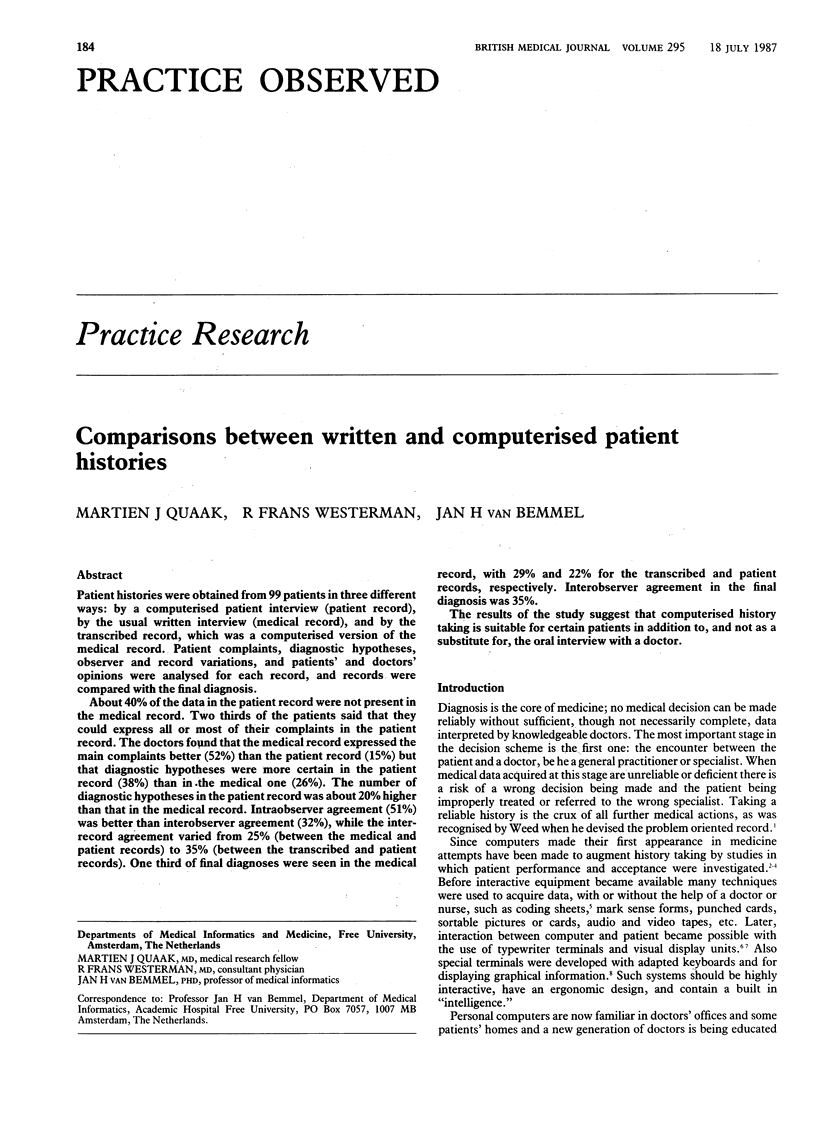
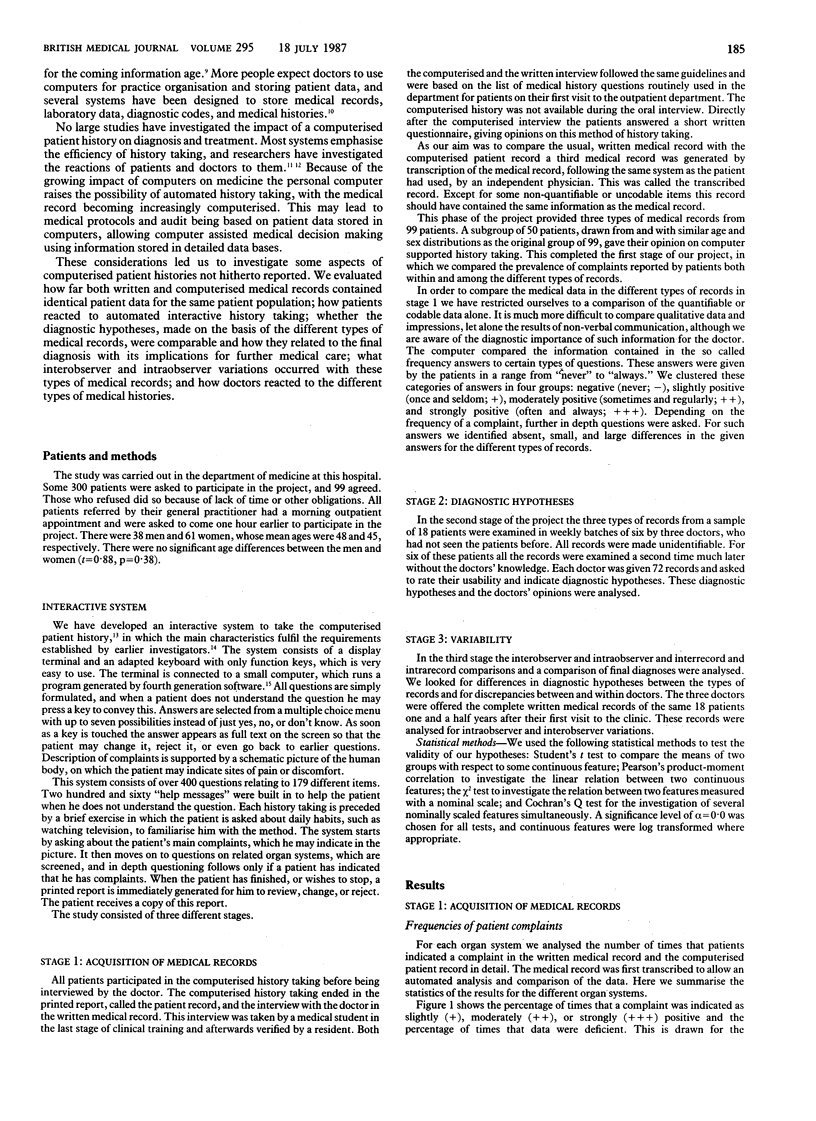

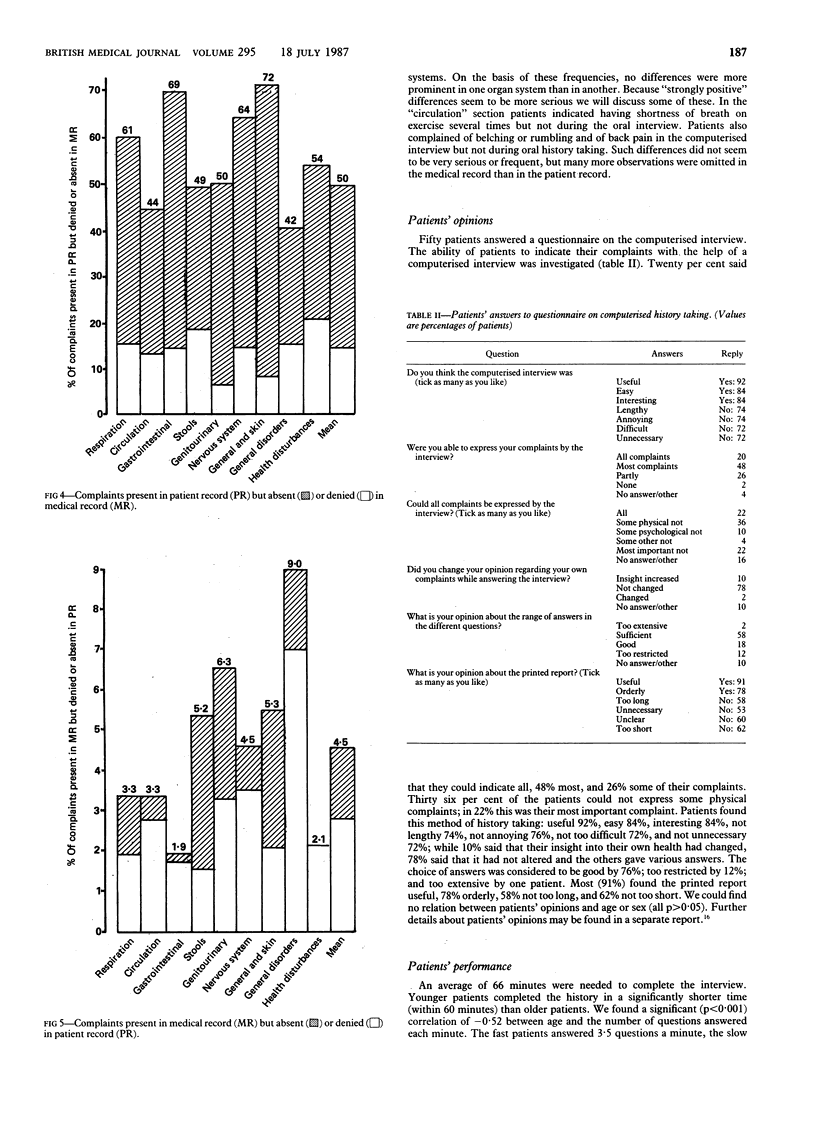
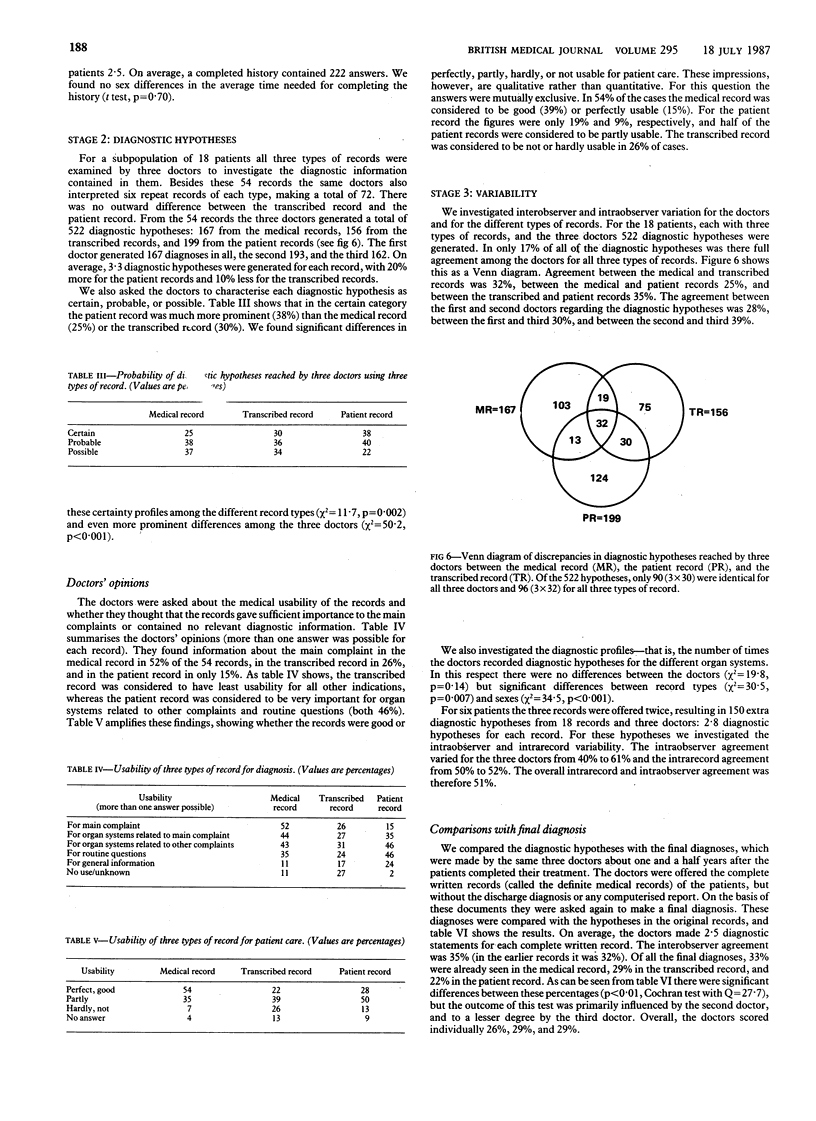
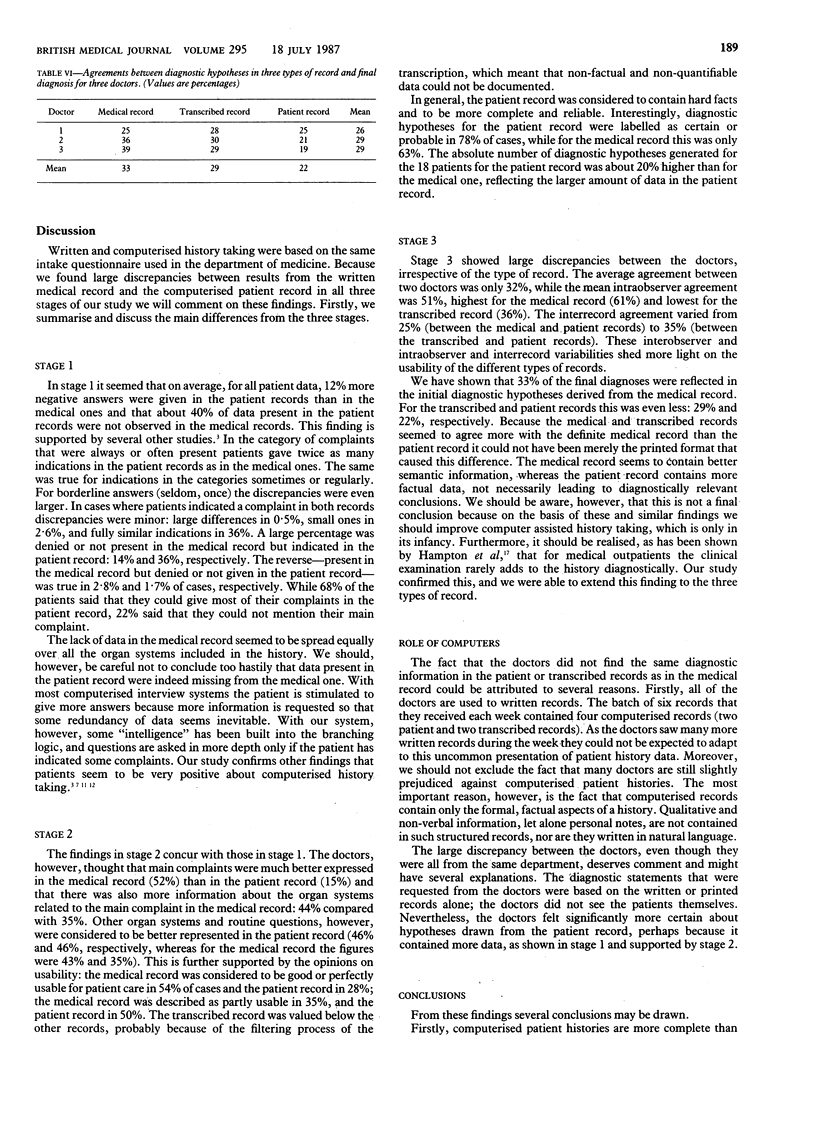
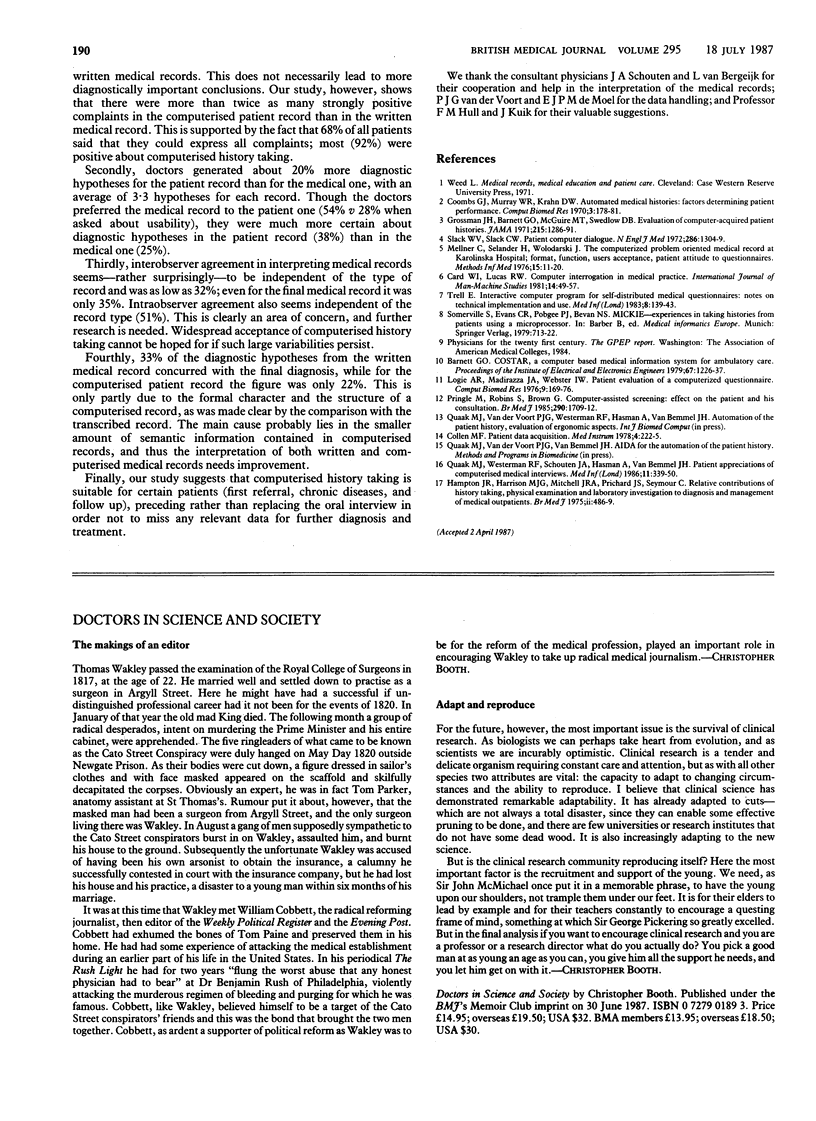
Selected References
These references are in PubMed. This may not be the complete list of references from this article.
- Coombs G. J., Murray W. R., Krahn D. W. Automated medical histories: factors determining patient performance. Comput Biomed Res. 1970 Apr;3(2):178–181. doi: 10.1016/0010-4809(70)90024-8. [DOI] [PubMed] [Google Scholar]
- Grossman J. H., Barnet G. O., McGuire M. T., Swedlow D. B. Evaluation of computer-acquired patient histories. JAMA. 1971 Feb 22;215(8):1286–1291. [PubMed] [Google Scholar]
- Hampton J. R., Harrison M. J., Mitchell J. R., Prichard J. S., Seymour C. Relative contributions of history-taking, physical examination, and laboratory investigation to diagnosis and management of medical outpatients. Br Med J. 1975 May 31;2(5969):486–489. doi: 10.1136/bmj.2.5969.486. [DOI] [PMC free article] [PubMed] [Google Scholar]
- Logie A. R., Madirazza J. A., Webster I. W. Patient evaluation of a computerised questionnaire. Comput Biomed Res. 1976 Apr;9(2):169–176. doi: 10.1016/0010-4809(76)90040-9. [DOI] [PubMed] [Google Scholar]
- Mellner C., Selander H., Wolodarski J. The computerized problem-oriented medical record at Karolinska Hospital -- format and function, users' acceptance and patient attitude to questionnaire --. Methods Inf Med. 1976 Jan;15(1):11–20. [PubMed] [Google Scholar]
- Pringle M., Robins S., Brown G. Computer assisted screening: effect on the patient and his consultation. Br Med J (Clin Res Ed) 1985 Jun 8;290(6483):1709–1712. doi: 10.1136/bmj.290.6483.1709. [DOI] [PMC free article] [PubMed] [Google Scholar]
- Quaak M. J., Westerman R. F., Schouten J. A., Hasman A., van Bemmel J. H. Patient appreciations of computerized medical interviews. Med Inform (Lond) 1986 Oct-Dec;11(4):339–350. doi: 10.3109/14639238608997657. [DOI] [PubMed] [Google Scholar]
- Slack W. V., Slack C. W. Patient-computer dialogue. N Engl J Med. 1972 Jun 15;286(24):1304–1309. doi: 10.1056/NEJM197206152862408. [DOI] [PubMed] [Google Scholar]
- Trell E. Interactive computer program for self-distributed medical questionnaires: notes on technical implementation and use. Med Inform (Lond) 1983 Apr-Jun;8(2):139–143. [PubMed] [Google Scholar]


